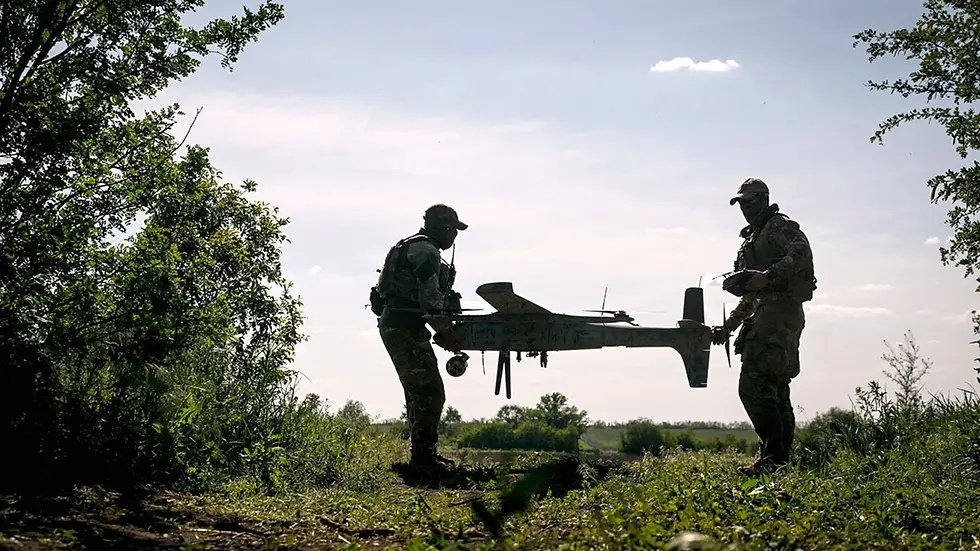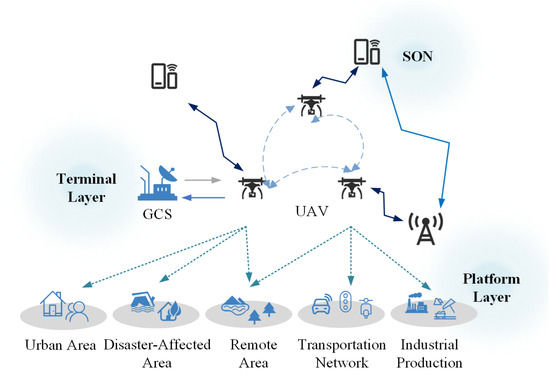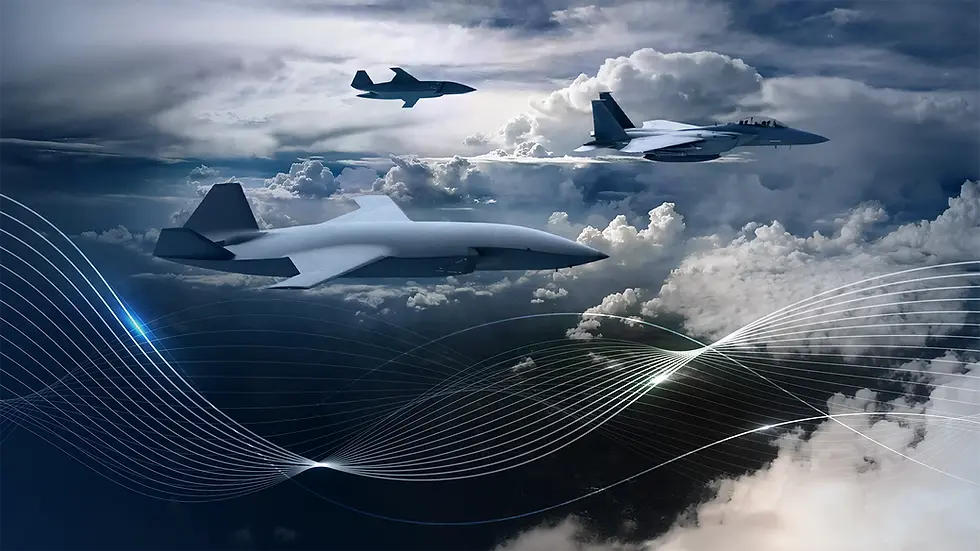Ukraine War: How AI and Emerging Technologies Are Revolutionising the Future of the Battlefield
- Talha A.
- Aug 20
- 7 min read

In the ongoing conflict between Ukraine and Russia, which entered its fourth year in 2025, technology has emerged as a pivotal force multiplier. What began as a conventional invasion has evolved into a high-tech proving ground, where artificial intelligence (AI), drones, and cyber tools are reshaping warfare. Ukraine, facing a numerically superior adversary, has leveraged innovation to level the playing field, while Russia adapts with its own advancements. This blog explores how AI and tech are transforming defense strategies, drawing lessons for the global battlefield of tomorrow. From autonomous drones to predictive analytics, these tools are not just aiding survival—they're redefining victory.
The Background: AI's Role in the Ukraine-Russia War
The significance of AI in the Ukraine War is clear, as the conflict, sparked by Russia's full-scale invasion in February 2022, has highlighted the limitations of traditional military might. Russia initially relied on massed artillery and manpower, but Ukraine's agile use of technology disrupted these tactics. By 2025, AI has become a "significant asset," particularly in data analysis for operators and decision-making. Drones alone account for up to 80% of casualties on the front lines, with AI enabling precision strikes that outpace human capabilities.
Understanding AI in the Ukraine War requires looking at specific platforms like Ukraine's Ministry of Defense's Avengers, which automatically detect 12,000 enemy targets weekly through video analysis from drones and cameras. Meanwhile, Russia has ramped up electronic warfare (EW) and AI-integrated drones, such as the Lancet Izdeliye-53 with auto-steering. This tech arms race underscores a shift: wars are increasingly won by code, not just cannons.
AI-Powered Drones: The New Kings of the Sky

A key aspect of AI in the Ukraine Russia War is the evolution of drones, which have become synonymous with the conflict, evolving from reconnaissance tools to AI-driven killers. Ukraine's Unmanned Systems Forces, a dedicated military branch, deploys swarms that distract, jam, and strike with up to 80% accuracy in jammed environments—far surpassing the 10-50% hit rate of manual drones. AI enables autonomous navigation, target identification, and mission completion even without human input.
Key examples include:
Saker Scout Drones: These use AI for terrain recognition and strikes, tested on Russian positions since early 2024.
Flamingo Cruise Missiles: With a 3,000 km range, they can hit deep into Russia, carrying up to a 1-ton warhead.
Pavuk Dopkhina Drones: AI-powered for 50 km deep strikes, developed by Ukraine's 3rd Assault Brigade.
Russia counters with AI-enhanced models like the MS001, featuring thermal imaging and swarm communications. In 2025, Russia deployed new EW systems to protect against Ukrainian drones, but Ukraine's innovations, like the Vector AI drone with acoustic sensors for artillery detection, keep the edge. Drone swarms, powered by AI, represent the future: scalable, attritable, and relentless.
Intelligence and Predictive Analytics: Seeing the Battlefield Clearly

AI's true power lies in processing vast data streams. Ukraine's Avengers platform analyzes drone footage to spot threats in real-time, fusing inputs from drones, allies, and air domains for predictive threat anticipation. This has been crucial in contested areas, where human analysis would be too slow.
On the ground:
AI turrets like Sky Sentinel provide autonomous air defense, never tiring or hesitating.
Predictive analytics help evacuate wounded via robotic platforms, with 15,000 such systems deployed in 2025.
Russia uses AI for similar ends, like in the Lancet drone's vision models for auto-targeting. However, Ukraine's Brave1 initiative accelerates prototyping, turning battlefield needs into deployable tech in months. A standout case: A 4 km AI-assisted sniper shot in 2025, factoring in wind, humidity, and Earth's curve.
Cyber Warfare and Electronic Countermeasures: The Invisible Front

Cyber tools and EW are the war's silent warriors. Russia has used AI to enhance information operations, generating propaganda via generative models. Ukraine defends with AI-driven cyber defenses, while both sides deploy jamming tech—Russia leading in EW to disrupt drones.
In 2025, Ukraine integrated AI into air defense sights and evacuation platforms, countering Russian advances. Satellite imagery, enhanced by AI, documents war crimes and provides real-time intel. This domain shows tech's dual edge: enabling precision while escalating risks of escalation.
The New Frontline Skillset: The Soldier as a Tech Operator
The rise of AI and autonomous systems is fundamentally changing the role of the individual soldier. The quintessential warrior of 2025 is not just a rifleman but also a drone pilot, data analyst, and systems integrator.
Cognitive Offloading: On one hand, AI handles grueling tasks like constant surveillance and complex targeting calculations, reducing the cognitive load on soldiers and allowing them to focus on higher-level strategy. A soldier doesn't need to manually calculate a mortar solution when an AI can do it instantly based on drone-fed coordinates.
New Skill Demands: On the other hand, troops now require proficiency in operating complex software interfaces, troubleshooting network issues under fire, and interpreting AI-generated intelligence. This has led to the emergence of specialized, tech-savvy units and a greater emphasis on continuous digital training, turning muddy trenches into hubs of surprising technological activity.
This shift creates a new dynamic where a unit's effectiveness is measured not just by its firepower, but by its bandwidth and processing power.
The Economic Asymmetry: Winning the War of Attrition with Code

A crucial, yet often overlooked, aspect of this tech-infused conflict is the stark economic asymmetry it creates. This goes beyond the simple cost comparison in your table and becomes a strategic doctrine.
Ukraine has masterfully leveraged this principle. A locally produced $1,000 FPV (First-Person View) drone can disable or destroy a Russian T-90 tank, an asset worth over $4.5 million. This isn't just a tactical victory; it's a devastating economic blow. By deploying thousands of cheap, intelligent, and disposable drones, Ukraine is waging a war of attrition that Russia, despite its larger economy, struggles to counter efficiently. This "death by a thousand cuts" strategy targets not just military hardware but the enemy's treasury, making the conflict prohibitively expensive for the aggressor.
The Unseen Backbone: Starlink, OSINT, and the Battle for Information

While AI-powered drones are the visible stars, their effectiveness relies on an unseen digital backbone. Two elements have been particularly transformative:
Persistent Connectivity (Starlink): The deployment of SpaceX's Starlink satellite internet has been a game-changer. It provides resilient, high-speed connectivity to frontline units, enabling real-time video feeds from drones, secure communications, and coordination of complex operations even when traditional infrastructure is destroyed. It is the central nervous system of Ukraine's agile, decentralized command structure.
AI-Powered Open-Source Intelligence (OSINT): The conflict is the most transparent in history, thanks to commercial satellite imagery and social media. AI algorithms sift through terabytes of this public data to track Russian troop movements, verify equipment losses, and independently document potential war crimes. This has democratized intelligence, allowing open-source analysts worldwide to contribute to the war effort and counter state-sponsored disinformation.
Future Implications: A Blueprint for Global Defense
The Ukraine war is a "testing ground" for AI, influencing NATO and beyond. Lessons include:
Asymmetric Warfare: Small nations can punch above their weight with AI, as Ukraine's "robots first" strategy demonstrates.
Swarm Tactics: AI-coordinated swarms could dominate future battles, reducing human involvement.
Global Innovation: Ukraine's ecosystem inspires allies; even German AI drones are changing outcomes.
By 2025, AI is "eroding the norms of war," accelerating autonomy at a pace unseen before. For defense leaders, this means investing in scalable autonomy—the decade's most impactful tech.
Aspect | Traditional Warfare | AI-Enhanced Warfare in Ukraine |
Targeting | Manual, error-prone | AI predictive, 80%+ accuracy |
Speed | Human-limited | Real-time, autonomous decisions |
Scale | Limited by manpower | Swarms, thousands of targets/week |
Cost | High (tanks, jets) | Low (drones, software) |
Challenges and Ethical Concerns
Despite advantages, AI brings risks. Autonomy raises questions: Who audits black-box decisions? Ethical dilemmas include AI's role in targeting civilians or eroding human oversight. Arms control is "difficult to imagine," as tech advances outpace regulations.
Russia's adaptations, like new anti-drone systems, show the cat-and-mouse game continues. Ukraine's reliance on tech also exposes vulnerabilities to cyber attacks.
Conclusion: The Dawn of Automated Warfare
The Ukraine war proves AI and tech are not futuristic—they're here, revolutionizing defense. Ukraine's innovations offer a model for outsmarting larger foes, while Russia's responses highlight adaptation's necessity. As Eric Schmidt notes, AI will be "key to victory" in Ukraine and beyond. For global militaries, the message is clear: Embrace AI or risk obsolescence. Yet, with great power comes responsibility—ensuring tech serves humanity, not just the battlefield.
Stay tuned to AI News Hub for more on emerging tech in defense. What do you think: Is AI a savior or a Pandora's box in warfare? Share below!
Frequently Asked Questions (FAQs)
How is AI being used in the Ukraine War?
AI is used for multiple purposes: analyzing drone video to automatically detect thousands of enemy targets weekly (e.g., the Avengers platform), enabling drones to autonomously navigate and strike with high precision even in jammed environments, powering predictive analytics for troop movements, and operating autonomous defensive systems like AI-powered turrets.
What are some examples of AI-powered drones in this conflict?
Ukraine has deployed systems like the Saker Scout AI drone for terrain recognition and strikes, Pavuk Dopkhina drones for deep strikes, and the Flamingo cruise missile. Russia has countered with its own AI-enhanced models, such as the Lancet Izdeliye-53 drone, which features auto-steering and vision-based targeting.
How has technology allowed Ukraine to fight a larger adversary like Russia?
Technology acts as a force multiplier for Ukraine. It enables asymmetric warfare, where low-cost, high-tech tools can neutralize expensive conventional assets. For example, a $1,000 FPV drone can destroy a multi-million dollar tank, inflicting severe economic and military damage at a fraction of the cost and risk.
What is the real impact of drones on the battlefield?
Drones have become a dominant force, reportedly accounting for up to 80% of casualties on the front lines. They have evolved from simple reconnaissance tools into the primary means of delivering precision strikes, conducting electronic warfare, and overwhelming enemy defenses through coordinated swarm attacks.
What are the ethical concerns surrounding the use of AI in this war?
The main ethical concerns involve the growth of autonomous "lethal autonomous weapons" (LAWs) that can make kill decisions without direct human oversight. This raises questions about accountability for "black box" AI decisions, the risk of accidental escalation, and the difficulty of creating arms control treaties for rapidly advancing software.






Comments